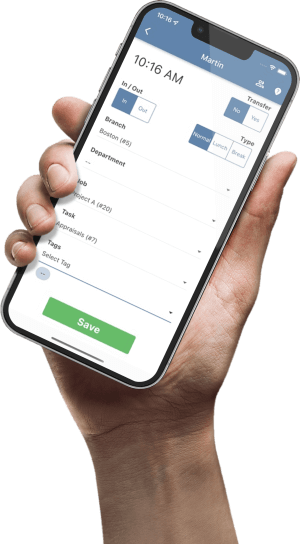
Nevada Payroll Tax: 2025
For small businesses in the Silver State, understanding the tax landscape is crucial for success. This guide provides an in-depth look at Nevada's unique payroll tax, the Modified Business Tax (MBT), to help you stay compliant and make informed financial decisions.
On This Page
- Introduction: Understanding Nevada's Unique Payroll Tax Landscape
- Understanding Nevada's Modified Business Tax (MBT)
- MBT Rates and Calculation for 2025
- Key Deductions and Credits Impacting MBT Liability
- Administrative and Compliance Roadmap for Nevada MBT
- Peering Beyond 2025: Future Trajectories for Nevada's MBT
- The MBT in Context: Nevada's Unique Business Tax Landscape
- Actionable Recommendations for Nevada Employers
Introduction: Understanding Nevada's Unique Payroll Tax Landscape
Nevada's tax system is distinctive, notably for its absence of corporate and personal state income taxes. However, businesses operating within the state are subject to other forms of taxation, including a significant employer-paid payroll tax known as the Modified Business Tax (MBT). This tax is a critical component of Nevada's revenue structure and directly impacts employers across various sectors.
This article provides an in-depth analysis of the Nevada Modified Business Tax, focusing on its structure, rates, and compliance requirements for the 2025 tax year and offering insights into anticipated developments beyond this period. Understanding these elements is crucial for businesses to ensure accurate compliance, manage tax liabilities effectively, and make informed strategic decisions.
Understanding Nevada's Modified Business Tax (MBT)
The Modified Business Tax is a cornerstone of Nevada's fiscal framework, impacting a broad spectrum of employers. Its unique characteristics and applicability require careful attention from businesses operating in the state.
The MBT Framework: An Overview
The official designation for Nevada's primary payroll tax is the Modified Business Tax, commonly referred to as MBT. It is structured as an excise tax levied on employers, calculated based on the wages paid to their employees during a calendar quarter. The Nevada Department of Taxation (NDOT) is the state agency responsible for administering the MBT, including providing guidance, processing returns, and ensuring compliance.
A fundamental aspect of the MBT is its linkage to the state's unemployment insurance system. Generally, any employer required to pay contributions under the Nevada Unemployment Compensation Law is also subject to the Modified Business Tax. This connection means that the act of becoming an employer liable for state unemployment insurance (SUI) automatically brings a business into the purview of the MBT.
Who Pays the MBT? Liable Employers and Key Exemptions
The MBT applies to most employers conducting business in Nevada. However, Nevada law provides specific exemptions for certain categories of organizations. These exempt entities typically include:
- Nonprofit organizations that qualify under Section 501(c) of the Internal Revenue Code.
- Native American Tribes.
- Political subdivisions of the state.
- Employers whose workforce consists solely of household employees.
It is important for businesses to accurately determine their status. For instance, owners of Limited Liability Companies (LLCs) are generally not considered employees for MBT purposes if the LLC has no other employees; in such solo-owner scenarios, the MBT typically does not apply to the owner's draw. However, if the LLC employs other individuals, it becomes subject to MBT on the wages paid to those employees.
MBT Rates and Calculation for 2025
The calculation of the Modified Business Tax in Nevada for 2025 hinges on specific classifications, tax rates, and wage thresholds. The rates effective from July 1, 2023, are anticipated to continue into 2025, barring any new legislative changes.
Dual Classifications: General Business vs. Financial Institutions & Mining
Nevada's MBT system categorizes employers into two primary classifications, each with a distinct tax rate structure:
- General Business: This category, governed by NRS Chapter 363B, encompasses most employers in Nevada that do not fall under the specific definition of a financial institution or a mining operation.
- Financial Institutions and Mining: This classification, under NRS Chapter 363A, applies to entities like banks and credit unions, and was expanded to include taxpayers subject to the Net Proceeds of Minerals Tax, effectively bringing mining operations under this higher rate.
The Nevada Department of Taxation typically determines an employer's MBT classification based on the business's description and licensing. While the MBT is a self-reporting tax, the Department has the authority to review and determine the appropriate classification.
General Business MBT Rate and Threshold (Applicable for 2025)
For employers classified as "General Business," the MBT rate is 1.17%. A significant feature for this category is a quarterly wage exemption: the first $50,000 of gross wages paid by an employer during a calendar quarter is not subject to the tax. The 1.17% tax is levied only on the portion of quarterly taxable wages that exceeds this $50,000 gross wage threshold.
Financial Institutions & Mining MBT Rate (Applicable for 2025)
For employers classified as "Financial Institutions" (which includes mining operations), the MBT rate is 1.554%. This rate is applied to the employer's quarterly taxable wages. Unlike the General Business category, there is no $50,000 quarterly wage exemption; the tax applies to all taxable wages from the first dollar.
Defining "Gross Wages" and "Taxable Wages": The Core Calculation
Understanding the distinction between "gross wages" and "taxable wages" is fundamental. Gross Wages refers to the total compensation paid to employees during a quarter, including tips, before any deductions. This amount should align with wages reported to the Nevada Employment Security Division (ESD) for SUI purposes. Taxable Wages is the amount the MBT rate is applied to. It's calculated as gross wages minus any allowable deductions for employer-paid health benefits.
| Employer Classification | MBT Rate | Quarterly Gross Wage Exemption | Taxable Wage Base |
|---|---|---|---|
| General Business | 1.17% | First $50,000 | Gross wages over $50,000, less health care deductions |
| Financial Institutions & Mining | 1.554% | None | All gross wages, less health care deductions |
Key Deductions and Credits Impacting MBT Liability
Nevada law provides several ways for employers to reduce their MBT liability. Properly utilizing these provisions can lead to substantial tax savings.
The Significant Deduction: Employer-Paid Health Insurance and Benefit Plans
One of the most impactful provisions is the deduction for amounts paid by the employer for employee health insurance or a health benefit plan. Per NRS 363B.115, employers can deduct premiums, self-insured costs, and other authorized payments like dental and vision insurance. Importantly, payments made by employees are not deductible. If the allowable deduction exceeds gross wages in a quarter, the excess can be carried forward to the next quarter.
Commerce Tax Credit: A Strategic Offset for Eligible Businesses
Businesses subject to Nevada's Commerce Tax (for those with over $4 million in annual Nevada gross revenue) can claim a significant credit. An employer is entitled to a credit against the MBT equal to 50% of the Commerce Tax paid for the preceding fiscal year. This credit can be used to offset MBT due for any of the four calendar quarters immediately following payment of the Commerce Tax.
Other Credits and Abatements: Opportunities for Specific Scenarios
Beyond the main deductions, Nevada offers other incentives:
- Partial Abatement for New/Expanding Businesses: The Governor's Office of Economic Development (GOED) offers partial MBT abatements for businesses that meet criteria for job creation, capital investment, and wage levels.
- Credit for Matching Employee College Savings: Employers can claim a credit of 25% of matching contributions to an employee's qualified Nevada college savings account, capped at $500 per employee per year.
- Credit for Donation to Scholarship Organization: A credit is available for pre-approved monetary donations made to qualified scholarship organizations.
| Deduction/Credit Type | Eligibility Criteria | Benefit |
|---|---|---|
| Employer-Paid Health Insurance Deduction | Employer payments for qualifying employee health plans. | Reduces gross wages to arrive at taxable wages. Excess can be carried forward. |
| Commerce Tax Credit | Businesses paying Nevada Commerce Tax (>$4M annual NV gross revenue). | 50% of Commerce Tax paid, applied against MBT over next 4 quarters. |
| Partial Abatement for New/Expanding Businesses | Meet GOED criteria for job creation, investment, wages, etc. | Up to 50% abatement of MBT due during first 4 years. |
| Credit for Matching College Savings | Match employee contributions to qualified Nevada college savings plans. | 25% of match, up to $500/employee/year. 5-year carryforward. |
Administrative and Compliance Roadmap for Nevada MBT
Navigating the administrative requirements of the MBT is crucial to avoid penalties and maintain good standing.
Registration and Account Setup: The First Steps
MBT compliance begins with registering for State Unemployment Insurance (SUI). Every employer subject to SUI is automatically assigned an MBT account after registering with the Employment Security Division (ESD). Your Nevada Taxpayer ID number (TID) serves as your MBT account number for all filings and correspondence with the NDOT.
Filing Obligations: Forms, Frequency, and Deadlines
MBT returns are due quarterly. The deadline for filing and paying is the last day of the month following the end of each calendar quarter. A critical point for small businesses: all employers subject to the tax must file a quarterly return, even if no tax is due for that period (e.g., wages are below the $50,000 threshold). Failure to file can lead to estimated assessments from the NDOT.
| Quarter | Quarter End Date | MBT Return & Payment Due Date |
|---|---|---|
| Q1 2025 | March 31, 2025 | April 30, 2025 |
| Q2 2025 | June 30, 2025 | July 31, 2025 |
| Q3 2025 | September 30, 2025 | October 31, 2025 |
| Q4 2025 | December 31, 2025 | January 31, 2026 |
Digital Tax Administration: From Nevada Tax Center to "My Nevada Tax"
Currently, businesses file their MBT returns through the Nevada Tax Center portal. However, the NDOT is undergoing a major modernization effort. The MBT is scheduled to transition to a new e-services platform called "My Nevada Tax" in December 2025. Businesses will need to prepare for this new system, which will likely involve new registration and a different user interface. Monitor communications from NDOT throughout 2025 for details on this important transition.
Peering Beyond 2025: Future Trajectories for Nevada's MBT
Looking ahead, several developments are poised to influence the landscape of Nevada's Modified Business Tax.
The 2026 MBT Wage Comparison: Preparing for Renewed Scrutiny
A significant development will be the resumption of the NDOT's "Modified Business Tax Wage Comparison" process, starting January 1, 2026. This program systematically compares gross wages reported on MBT returns against wage data submitted to the ESD for SUI. As detailed in an official NDOT notice, discrepancies will trigger a deficiency determination, including additional tax, penalties, and interest. This provides a window of opportunity in 2025 for employers to conduct internal reviews of their wage reporting practices to ensure consistency.
Ongoing Tax System Modernization and Its Impact
The transition to "My Nevada Tax" is part of a broader push towards digital-first tax administration. This may lead to the phasing out of physical paper forms and places a greater responsibility on taxpayers to maintain their own complete, accurate, and easily accessible digital records for audit and reference purposes.
Anticipating Potential Legislative Shifts
The history of the MBT is characterized by frequent legislative adjustments. Given Nevada's reliance on business and consumption taxes in lieu of personal or corporate income taxes, the MBT is a primary lever for fiscal policy changes. Businesses should factor this potential for variability into their long-term planning and stay informed about legislative developments.
The MBT in Context: Nevada's Unique Business Tax Landscape
The MBT is just one piece of Nevada's overall tax puzzle. Its interplay with other state taxes is crucial to understand.
Interplay with Commerce Tax and State Unemployment Insurance (SUI)
Effective tax management requires a holistic approach. SUI wage reporting is the foundation for MBT calculations. Commerce Tax payments directly reduce MBT liability via the 50% credit. Managing these three taxes in concert is essential for compliance and cost optimization.
The Strategic Advantage: Absence of State Income Tax
A defining characteristic of Nevada's business landscape is the absence of a state personal income tax and a state corporate income tax. This is a cornerstone of Nevada's reputation as a "business-friendly" state, a feature consistently recognized by organizations like the Tax Foundation. While the MBT is a direct cost, for many businesses, the benefits of having no state income tax can substantially outweigh the liabilities from MBT and other business taxes, making Nevada an attractive jurisdiction.
Actionable Recommendations for Nevada Employers
To navigate the MBT effectively, employers should adopt the following practices:
- Verify Your Business Classification: Ensure you are using the correct rate (General Business vs. Financial/Mining).
- Track Quarterly Wages Diligently: Know when you cross the $50,000 threshold if you're a General Business.
- Maximize Health Care Deductions: Meticulously document and deduct all eligible employer-paid health benefit costs.
- Optimize the Commerce Tax Credit: Plan payments to maximize the 50% credit against your MBT liability.
- Maintain Strict Filing Discipline: File a return every quarter, even if no tax is due.
- Proactively Reconcile Wage Reporting: Before 2026, reconcile wages reported for SUI and MBT to avoid future assessments.
- Stay Informed: Monitor news about the "My Nevada Tax" transition and any potential legislative changes.
- Keep Robust Digital Records: Maintain your own complete digital copies of all tax filings and supporting documents.
Simplify Your Nevada Payroll
Calculating Nevada's Modified Business Tax can be complex. Let TimeTrex help you stay accurate and compliant with our powerful payroll solutions.
Use Our Free Nevada Payroll Tax CalculatorDisclaimer: The content provided on this webpage is for informational purposes only and is not intended to be a substitute for professional advice. While we strive to ensure the accuracy and timeliness of the information presented here, the details may change over time or vary in different jurisdictions. Therefore, we do not guarantee the completeness, reliability, or absolute accuracy of this information. The information on this page should not be used as a basis for making legal, financial, or any other key decisions. We strongly advise consulting with a qualified professional or expert in the relevant field for specific advice, guidance, or services. By using this webpage, you acknowledge that the information is offered “as is” and that we are not liable for any errors, omissions, or inaccuracies in the content, nor for any actions taken based on the information provided. We shall not be held liable for any direct, indirect, incidental, consequential, or punitive damages arising out of your access to, use of, or reliance on any content on this page.
About The Author

Roger Wood
With a Baccalaureate of Science and advanced studies in business, Roger has successfully managed businesses across five continents. His extensive global experience and strategic insights contribute significantly to the success of TimeTrex. His expertise and dedication ensure we deliver top-notch solutions to our clients around the world.
Time To Clock-In
Start your 30-day free trial!
Experience the Ultimate Workforce Solution and Revolutionize Your Business Today
- Eliminate Errors
- Simple & Easy To Use
- Real-time Reporting

Saving businesses time and money through better workforce management since 2003.
Copyright © 2025 TimeTrex. All Rights Reserved.
